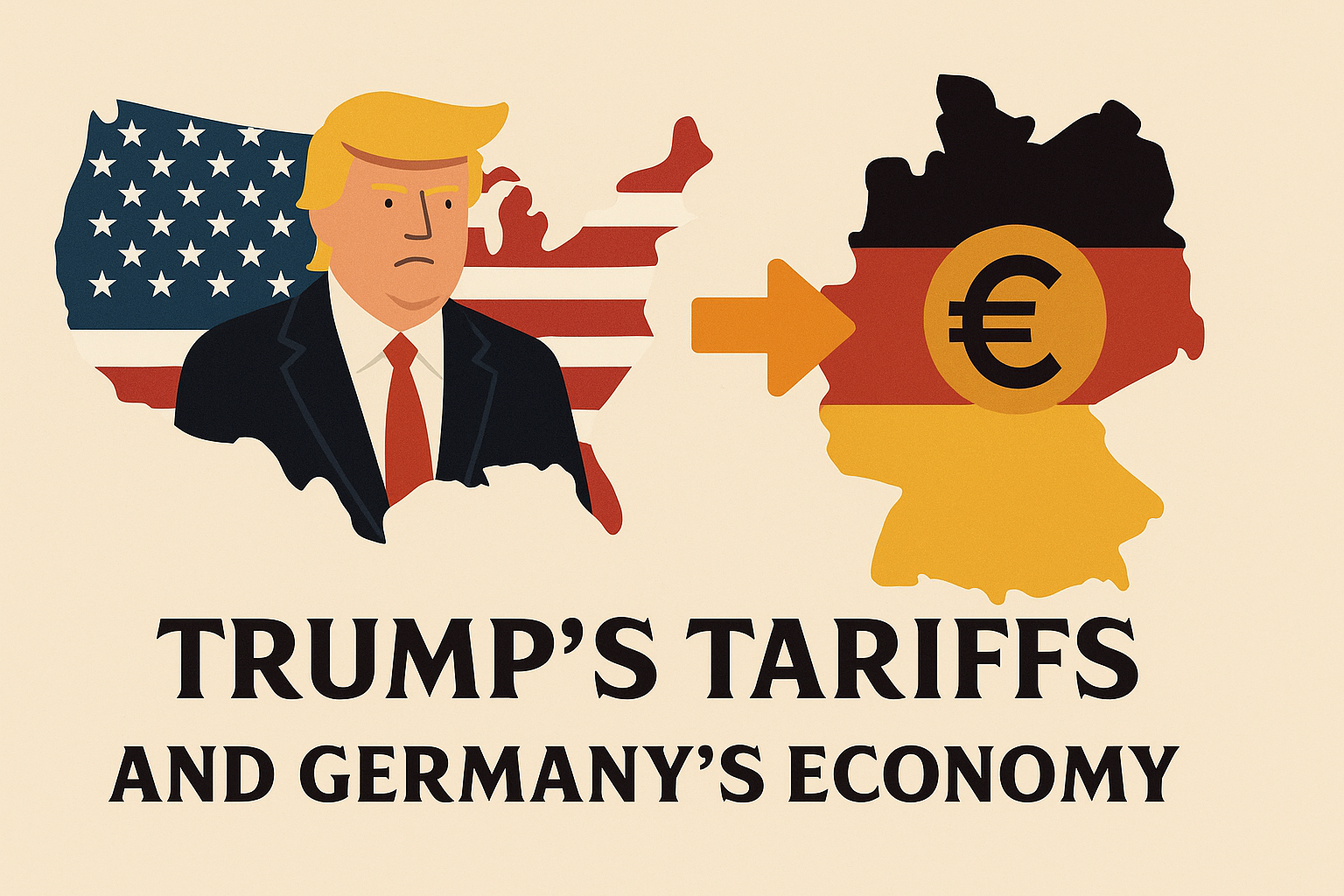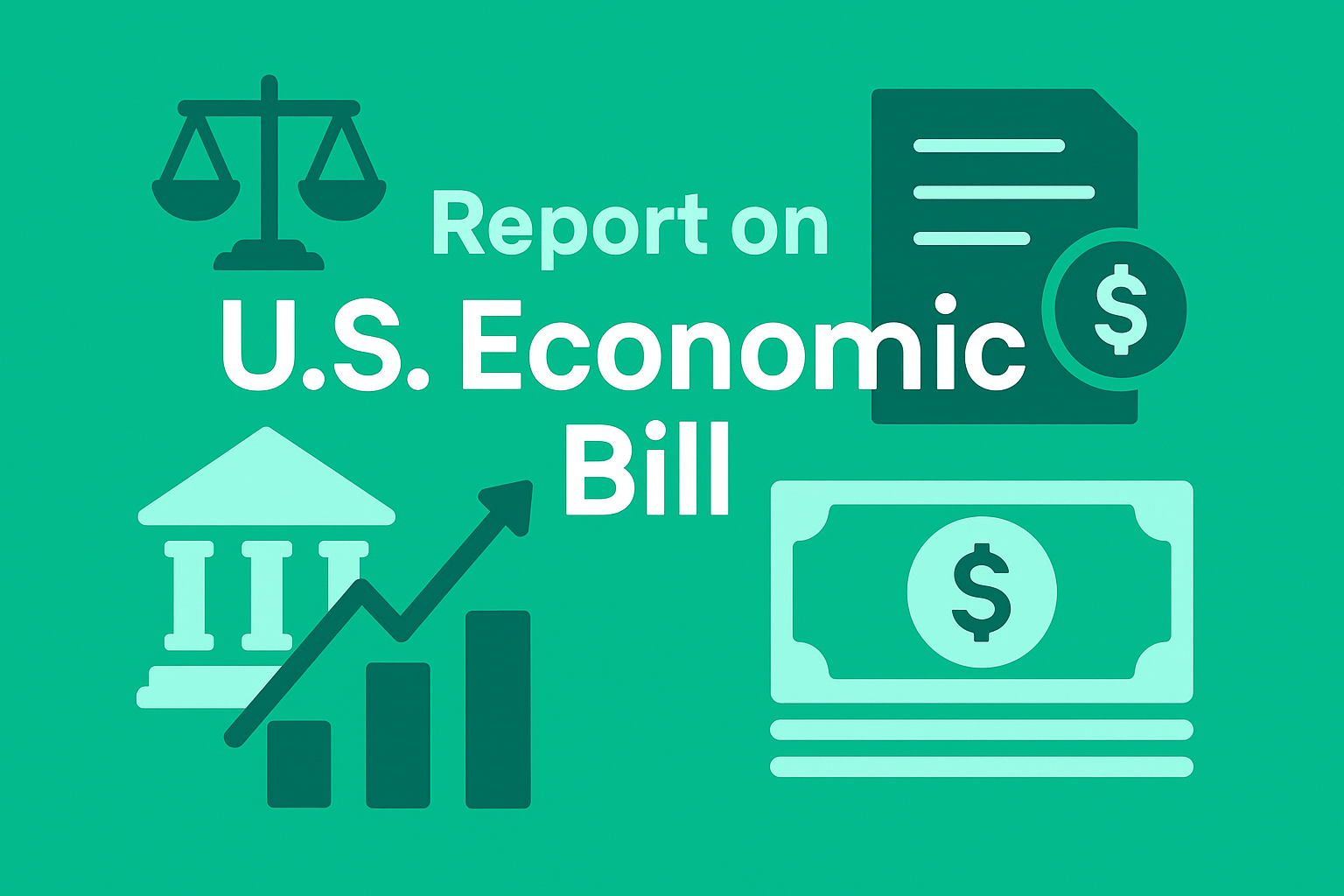Executive Summary
The Trump administration’s re-escalation of tariff measures—particularly the imposition of steep duties on steel, aluminum, and automobiles—has added new pressures to an already sluggish German economy. With export-driven sectors at the heart of German GDP, the unilateral U.S. trade actions risk triggering a contractionary cycle, both through direct trade disruptions and via heightened geopolitical uncertainty. This report provides a macroeconomic assessment of the immediate and structural consequences of U.S. tariffs on Germany’s economic stability, industrial competitiveness, and fiscal resilience.
Germany’s Trade Exposure: Structural Vulnerabilities
Germany is the world’s third-largest exporter and the most export-dependent major economy in the G7. In 2024, exports accounted for nearly 47% of Germany’s GDP. Among those, the United States is the second-largest destination after France, with over €120 billion in exports annually.
| Sector | U.S. Exposure Share |
|---|---|
| Automobiles | 27% |
| Machinery | 18% |
| Pharmaceuticals | 12% |
| Steel & Metals | 9% |
This reliance creates a structural vulnerability to externally imposed trade barriers.
Macroeconomic Effects of Tariffs: The Short-Term Shock
GDP Outlook Revision
The German Ministry of Economic Affairs revised its 2025 GDP growth forecast from +0.3% to 0.0%, citing trade disruptions as a major headwind.
Industrial Production Decline
Industrial output contracted by 1.4% year-on-year in Q1 2025. Automotive production, in particular, declined by over 5%, with car exports to the U.S. falling by 17% following the implementation of 25% import duties.
Labor Market Pressures
Volkswagen, BMW, and Daimler have already announced short-time work (Kurzarbeit) schemes affecting over 20,000 employees. Germany’s unemployment rate ticked up to 6.3% in May, reversing the post-COVID recovery trend.
Strategic Sectors Affected
🏭 Automotive Industry
The automotive sector is the backbone of German manufacturing, employing over 800,000 workers. U.S. tariffs sharply reduce the competitiveness of German vehicles in the American market. While BMW and Mercedes have U.S.-based production facilities, European-assembled models now face a significant pricing disadvantage.
🔩 Steel & Metal Fabrication
The U.S. hike to 50% tariffs on imported steel disproportionately impacts Salzgitter AG and Thyssenkrupp, both of which maintain U.S. export channels. Margins are compressed, and supply chain reconfigurations are proving costly.
Policy Response: German and EU-Level Actions
Domestic Mitigation Efforts
- Fiscal Support: Germany’s finance ministry has proposed a €20 billion relief package for export-heavy sectors.
- Labor Subsidies: Extension of Kurzarbeit subsidies to avoid layoffs.
- Incentives for Diversification: Grants for non-U.S. market development, particularly in Southeast Asia and Africa.
EU Retaliatory Framework
The European Commission is preparing retaliatory tariffs on American agricultural products and tech hardware. However, the EU seeks to avoid escalation by keeping diplomatic back channels open with USTR representatives.
Forward-Looking Risks and Strategic Recommendations
Key Risks
- Second-Round Effects: Reduced corporate investment and household confidence could trigger domestic demand contraction.
- Technology Transfer Risks: German firms may face forced localization or IP risks in attempting to skirt tariffs via U.S. production.
- Supply Chain Disruptions: Global logistics costs may rise as firms divert trade flows around tariff barriers.
Recommendations
- Accelerate Strategic Autonomy: Germany must deepen intra-EU supply chains and reduce overreliance on U.S. export markets.
- Enhance Transatlantic Policy Dialogue: Initiate structured dialogue mechanisms at OECD and WTO levels to de-escalate trade conflict.
- Diversify Energy and Industrial Inputs: Reduce exposure to U.S.-dominated inputs, particularly in petrochemicals and semiconductors.
Conclusion
The Trump administration’s tariff escalation represents more than a bilateral trade dispute—it is a strategic shock to Germany’s export-dependent growth model. While short-term damage is evident in industrial production and labor markets, the long-term implications include a possible redefinition of Germany’s global economic position. A proactive, multilateral, and innovation-driven response will be critical to preserving Germany’s status as Europe’s economic anchor.


